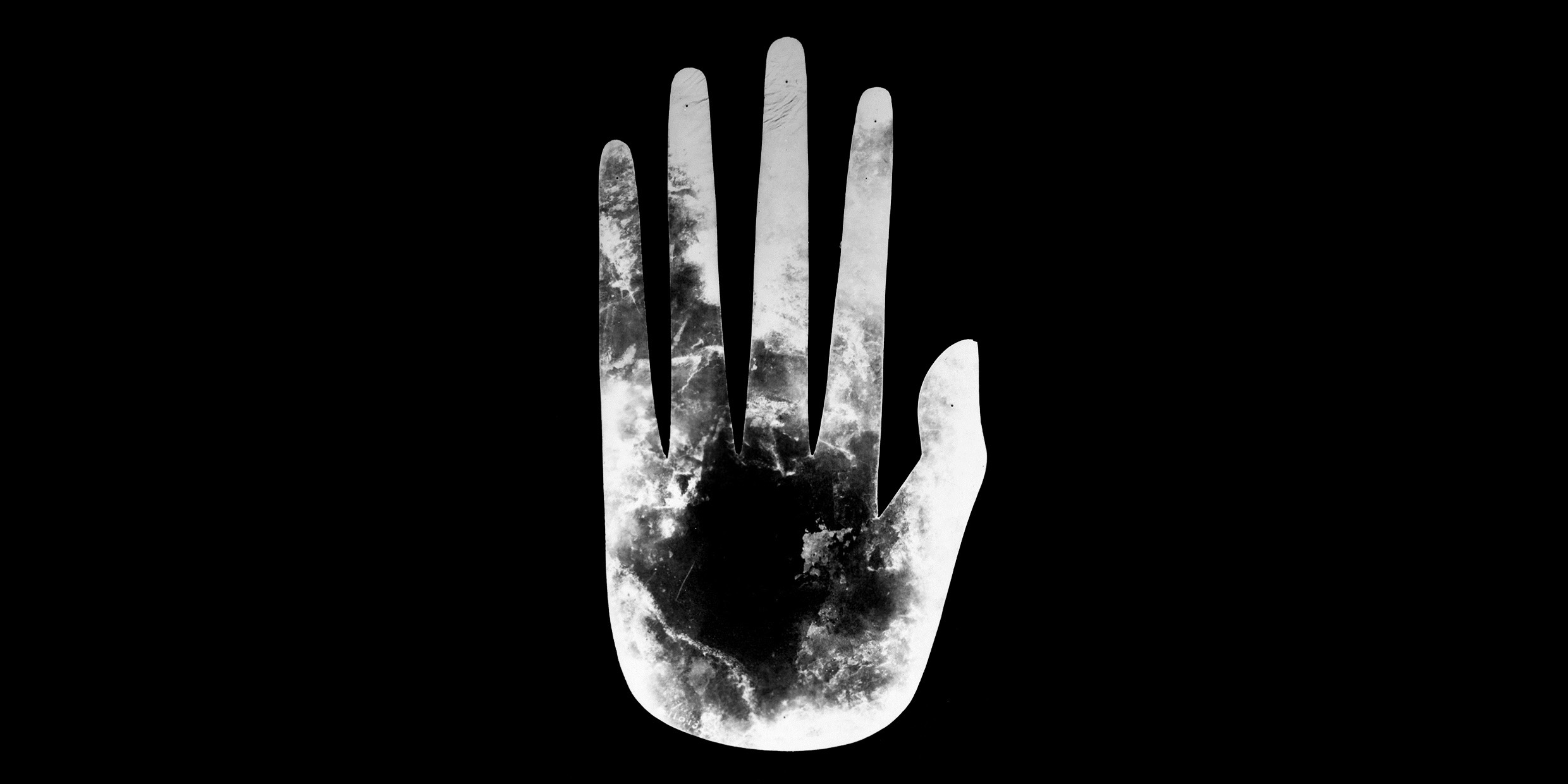Originally published 28 January 1991
Smart bombs. Night vision. Laser targeting.
Pilots used to fly by the seat of their pants; now they fly by computer screens, and place bombs with pinpoint accuracy down air shafts and smoke stacks. The strangely bloodless zip and flash of war is instantly relayed by satellite to every TV screen in the world. Prime time, high-tech mayhem.
The war in the Gulf drives all other reflections about science right out of the head. More somber themes suggest themselves: Science goes to war. Knowledge in the cause of death. The dark side of the force.
The topic is numbing. I look up from my word processor to stare out the window. There, taped to the glass, intercepting my gaze, is a Xerox transparency of the Hopewell hand.
It has been there for some time, placed in the window for no other reason than that the object it shows is beautiful, to my mind the most beautiful archeological artifact of pre-Columbian American culture: A life-sized silhouette human hand, cut from a thin, flat sheet of natural mica by a craftsman who lived 1,000 years ago in southern Ohio.
Now I see something I had not noticed before, something that distracts me from thoughts of war. The Hopewell hand is the hand of peace.
The people who cut the mica hand were the ancestors of the Algonquins, Iroquois, Cherokees, and other native American peoples. They lived in river valleys of central North America from 200 BC to 1000 AD, and left behind impressive complexes of burial mounds, temple mounds, hilltop ramparts, and earthen walls. We call them the Mound Builders.
Many of the ancient mounds were excavated by archeologists a century ago to provide an archeological exhibit for the 1893 Chicago world’s fair. One of the richest sites was on the farm of M. C. Hopewell in Ross County, Ohio, and the Hopewell name has come to signify the culture of the people who built the mounds.
The mica hand was excavated from a burial mound on Hopewell’s farm. It now resides in the Field Museum of Natural History in Chicago, and it was there that I saw it nearly 30 years ago, a thing of unforgettable beauty.
The beauty of the hand derives first of all from its stylized grace: long, tapering fingers, delicately crooked thumb, almost circular palm. It is translucent, flaky-thin, and subtly tinged with color. That it survived unbroken in the earth for a thousand years seems little short of miraculous.
The beauty of the hand derives also from its innocence. There is a playfulness about the mica silhouette, like the tracing of a hand on paper that is a way of self-expression for almost every child. And not just children. One of the commonest images of early rock and cave art worldwide is the silhouette hand, made by blowing or daubing pigment onto a rock surface around the artist’s spread fingers.
Through time and through space
There is still another dimension to the beauty of the Hopewell hand, one that required thoughts of war to bring to awareness. I am struck by a connection between the Hopewell hand and the Pioneer 10 spacecraft.
Pioneer 10 blasted off from Cape Kennedy in 1972. It flew past Jupiter two years later, then headed for the vast empty spaces between the stars, the first Earth-launched spacecraft destined to do so. Attached to Pioneer 10 is an engraved plaque bearing a message to any extraterrestrial civilization that might encounter the craft in future eons. No one seriously expects that the spacecraft will actually be intercepted; the plaque was placed aboard as a symbol of human aspirations to communicate with extraterrestrial intelligences.

The plaque was designed by astronomers Frank Drake and Carl Sagan. It bears information about the place of origin of the spacecraft within the galaxy, and it depicts a male and female human standing against an outline of the craft. The male’s hand is raised, palm forward, in the aspect of the Hopewell hand.
Sagan added the raised-hand to the figure of the man because he had once read in an anthropology book that the gesture is universally recognized among peoples of Earth as a sign of peace, and therefore possibly might be understood as such by inhabitants of other planets. Why should the meaning of this gesture be common to peoples who differ in language, religion, and way of life? Probably because it is a way of indicating, “See, I have no weapon.”
The raised-hand greeting is a cliche of Hollywood westerns. The Indian welcomes the White man with raised, open hand and the single word, “How.” The cavalry officer responds with raised gloved hand, palm forward, weapon-free. In the movies, as in life, these preliminary civilities are often followed by treachery and warfare, but the open hand gesture remains a familiar part of our non-verbal vocabulary.
It is this that I see in the image of the Hopewell hand taped to the window pane. “Peace,” the appropriately-named hand seems to say, and that too is a part of its beauty.




Hello,
Would it be possible to connect via email? I would like to share a study with you, I came across your work reading Understanding Understanding,
Thank you very much